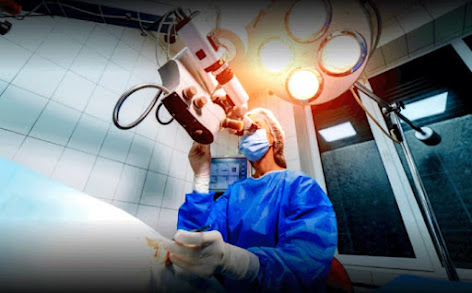Uncovering the Secrets Hidden Within: The Magic of Medical X-rays
The Global Medical
X-ray have been a crucial diagnostic tool in modern medicine for over a
century. X-rays use electromagnetic radiation to produce images of the inside
of the body, allowing doctors to see bones, organs, and other structures in
detail. Despite the widespread use of X-rays, many people are still unsure
about their benefits and potential risks. In this article, we'll take a closer
look at what X-rays are, how they work, and what you should know about the
benefits and risks associated with them.
Get Sample PDF Brochure: https://www.fortunebusinessinsights.com/enquiry/request-sample-pdf/104862
What Are Medical X-rays?
Medical X-rays, also known as radiographs, are non-invasive
diagnostic tests that use electromagnetic radiation to produce images of the
inside of the body. X-rays work by passing a small amount of ionizing radiation
through the body, which is then captured on film or a digital image detector.
The radiation passes through soft tissues like muscle and organs, but is
absorbed by denser materials like bone, creating a clear image of the bones and
other structures.
How Do X-rays Work?
Medical X-rays use a machine called a radiographic unit to
produce images. The machine consists of an X-ray generator and a detector,
typically a flat panel detector or a digital radiography system. When an X-ray
is taken, the patient is positioned so that the part of the body being examined
is between the X-ray generator and the detector. The X-ray generator produces a
burst of ionizing radiation, which passes through the body and is captured by
the detector. The resulting image is then displayed on a screen or printed for
analysis.
Benefits of Medical X-rays
Medical X-rays are an extremely useful diagnostic tool for
many conditions and injuries. Some of the benefits of X-rays include:
- Accurate
Diagnosis: X-rays can provide a clear and detailed view of the inside
of the body, allowing doctors to accurately diagnose a wide range of
conditions, from broken bones to lung problems.
- Non-Invasive:
Unlike many other diagnostic tests, X-rays are non-invasive, meaning that
they don't require any incisions or punctures to the skin.
- Quick
and Convenient: X-rays are quick and convenient, taking only a few
minutes to complete. They can also be performed in the doctor's office or
in a hospital setting, making them accessible for most patients.
- Inexpensive:
Compared to many other diagnostic tests, X-rays are relatively
inexpensive, making them an affordable option for patients.
Risks of Medical X-rays
Despite the many benefits of medical X-rays, there are also
potential risks associated with the procedure. Some of the risks of X-rays
include:
- Exposure
to Radiation: X-rays use ionizing radiation, which can be harmful if
too much is absorbed by the body. However, the amount of radiation used in
a typical X-ray is small and considered safe.
- False
Results: While X-rays are generally accurate, there is a small risk of
false results, especially if the image is not taken correctly or if the
interpretation of the image is incorrect.
- Allergic
Reactions: In rare cases, patients may have an allergic reaction to
the contrast material used in some X-rays, such as computed tomography
(CT) scans.
- Pregnancy:
X-rays should be avoided during pregnancy, as the ionizing radiation can
harm the developing fetus.




Comments
Post a Comment